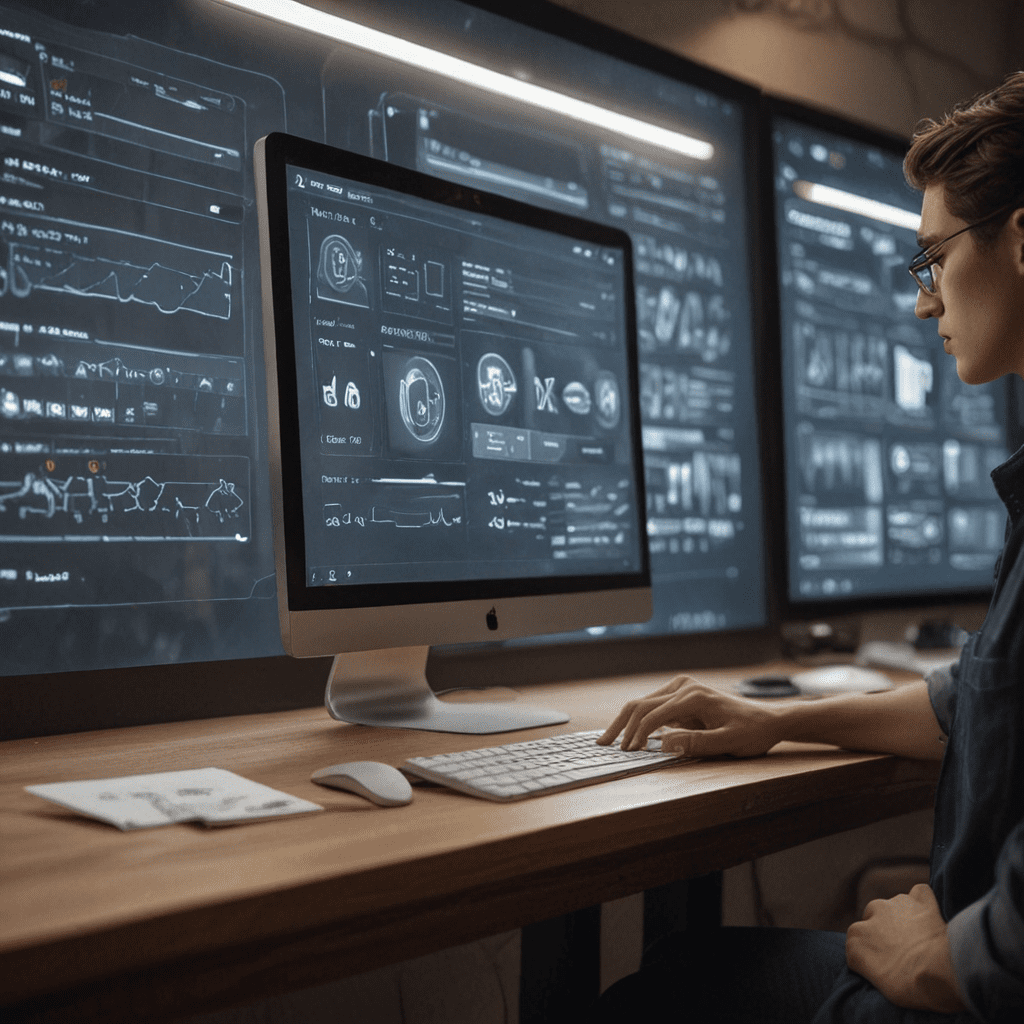Introduction
In the realm of digital experiences, User-Centered UX Design reigns supreme, prioritizing the seamless integration of user expectations into every aspect of the design process. UX Design, short for User Experience Design, encompasses the art and science of crafting interfaces that are both intuitive and satisfying for users. At its core lies the unwavering belief that by understanding and addressing user expectations, designers can create experiences that resonate, engage, and empower users.
Definition of User-Centered UX Design
User-Centered UX Design is a design philosophy that places the user at the forefront of every decision. It's about understanding users' needs, aspirations, and mental models to create digital products and services that align seamlessly with their expectations. This approach recognizes that users are not mere passive recipients of information but active participants in the design process. By involving users in the design cycle through research, testing, and feedback loops, UX designers can gain invaluable insights that lead to more user-friendly, effective, and emotionally resonant experiences.
Importance of User Expectations
User expectations play a pivotal role in shaping the success or failure of any digital product or service. When user expectations are met or exceeded, users are more likely to engage with the product, find value in it, and recommend it to others. On the flip side, unmet or unrealistic expectations can lead to confusion, frustration, and abandonment. By understanding and prioritizing user expectations, UX designers can create interfaces that not only perform well but also elicit positive emotions and build lasting relationships with users.
VI. Case Studies: Successful Examples
Successful implementations of user-centered UX design principles abound, showcasing the transformative power of understanding and meeting user expectations.
Example 1: Airbnb's Simplified Booking Process
Airbnb revolutionized the accommodation industry by introducing a seamless booking process that surpassed user expectations. By eliminating the hassle of negotiating with hosts and simplifying the reservation flow, Airbnb created an effortless and user-friendly experience that made vacation rentals more accessible and appealing.
Example 2: Google's Search Bar's Autocomplete Feature
Google's search bar autocomplete feature embodies the power of user expectations in shaping UX design. By anticipating and suggesting search queries based on real-time user input, Google empowers users to refine their search intentions quickly and efficiently. This intuitive feature saves time and enhances the overall search experience.
VII. Challenges in Meeting User Expectations
Despite the critical importance of user expectations, designers encounter challenges in aligning their designs with these expectations. Some key hurdles include:
Subjectivity of Expectations
User expectations are inherently subjective, varying widely based on individual experiences, cultural backgrounds, and personal preferences. Understanding and catering to this diverse spectrum of expectations requires extensive research and sensitivity to user diversity.
Evolving User Needs
User expectations are constantly evolving in response to technological advancements, societal shifts, and emerging trends. Keeping abreast of these changes requires continuous user research and iterative design to ensure that products remain aligned with evolving expectations.
Balancing User Expectations with Business Goals
While user expectations should guide design decisions, designers must also consider business goals and constraints. Striking a balance between meeting user needs and achieving organizational objectives can be complex, requiring careful negotiation and prioritization.
VIII. Best Practices for User-Centered UX Design
To effectively create user-centered UX designs, designers should adhere to these best practices:
Prioritizing User Experience
Place the user's needs and expectations at the heart of every design decision. User research, stakeholder engagement, and continuous feedback loops should inform and guide the design process.
Iterating and Testing
Embrace an iterative approach to design, implementing regular testing and user feedback sessions to refine designs and ensure optimal user experiences. Iterating based on data and insights leads to more user-centric outcomes.
Seeking Feedback and Continuous Improvement
Actively seek feedback from users throughout the design process and beyond. Continuous user feedback enables designers to identify areas for improvement, make necessary adjustments, and enhance the user experience over time.
IX. Future Considerations
As technology evolves, user expectations will continue to reshape the landscape of UX design:
Emerging Technologies and Changing Expectations
Advancements in artificial intelligence, augmented reality, and conversational interfaces will present new opportunities and challenges for meeting user expectations. Designers must anticipate and adapt to these evolving technologies to remain user-centric.
The Role of Artificial Intelligence
Artificial intelligence can assist in predicting user behavior, making personalized recommendations, and automating tasks. Leveraging AI responsibly can enhance user experiences and meet increasingly sophisticated user expectations.
The Importance of Ethical UX Design
With the rise of data-driven design, ethical considerations in UX design become paramount. Designers must ensure that user data is collected, used, and protected ethically, aligning with users' expectations of privacy and transparency.
X. Conclusion
User expectations hold immense power in driving successful user-centered UX designs. By understanding, prioritizing, and managing user expectations, designers can create digital products and services that resonate, engage, and empower users. Embracing best practices, addressing challenges, and embracing future considerations will enable designers to stay at the forefront of user-centric innovation and deliver exceptional user experiences.
FAQ
Q: What are the key challenges in meeting user expectations?
- Subjectivity of expectations
- Evolving user needs
- Balancing user expectations with business goals
Q: What are some best practices for user-centered UX design?
- Prioritizing user experience
- Iterating and testing
- Seeking feedback and continuous improvement
Q: How can designers manage user expectations?
- Communicate clearly
- Set realistic expectations
- Provide feedback and support

